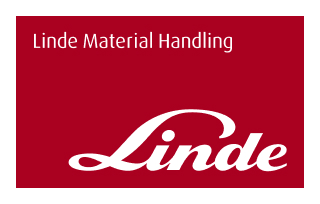- Blog
- News


Linde pallet trucks and reach trucks have confirmed their outstanding cost effectiveness by outperforming competitors’ equipment in rigorous side-by-side testing. The test results, compiled by independent organisation TUV Nord, underline Linde’s long demonstrated ability to develop market leading material handling equipment solutions.
TUV Nord is a global organisation with over a century of experience testing and evaluating equipment and processes for some of the world’s largest companies. It had previously conducted comparison tests on internal combustion forklifts which identified Linde forklifts as being up to 22 per cent more productive than their closest competitor. The latest warehouse truck tests were designed to evaluate several criteria including energy consumption and performance, to measure their impact on forklift productivity and operational costs.
In comparison to major competitors, Linde warehouse trucks tested by TUV Nord showed potential for operational cost savings of up to 20 per cent, depending on the model.

Commenting on the results, Linde Material Handling Australia CEO, Carl Smith, said they confirmed one of Linde’s key claims about the value of its trucks – that low total cost of ownership makes them an asset to any business. “Acquisition and financing costs only make up a small proportion of the overall costs of an industrial truck,” he said. “Much more important in terms of determining cost-effectiveness are the subsequent costs of ongoing operation, such as energy and service costs — with personnel costs a particularly decisive factor. “Whether dealing with forklifts or warehouse equipment such as reach trucks and pallet trucks, wages and salaries are not only the largest cost drivers, but also the decisive factor determining cost-effective operation of the device. Results such as those produced by the latest TUV Nord tests are one of the few ways in which a prospective material handling equipment buyer can make important investment decisions based on an accurate evaluation of cost-effectiveness. Those results, like the forklift results before them, demonstrate why Linde is the pace-setter in material handling equipment design.”
Although superior manoeuvrability played a key role in the test outcome, energy efficiency of the battery electric equipment was also crucial. The integrated design of the Linde reach trucks and pallet trucks calibrates key units such as hydraulics, drives, lift masts and chassis to one another for optimised performance. TUV Nord calculated warehouse truck productivity using a practical test which evaluated performance (required time in minutes) and consumption (energy consumption in ampere-hours). Each test was carried out three times per truck in a carefully configured warehouse environment in order to obtain reliable and valid results.
Linde pallet trucks and reach trucks were each tested together with the relevant trucks from competitors. The testing procedure involved defined work cycles derived from practical experience. For pallet trucks, eight pallets each weighing 600 kilograms had to be transported from a starting point to a truck 2.45 metres wide and 13.6 metres long and then loaded into the truck. The pallets were subsequently unloaded and transported back to their original racking.
For reach trucks, the test procedure involved taking pallets weighing 670 kilograms from their starting position and placing them into the aisles of a high-rack warehouse at heights of 4.5 metres and 6 metres. The pallets from higher levels then had to be moved to particular shelf spaces at ground level, based on the replenishment supply during order picking. Finally, the pallets were removed from storage and brought back from the aisles to the starting position.
“Warehouse trucks are an investment that represents a significant cost factor over their entire operating time,” Carl Smith commented. “This proves how important a performance test is for warehouse trucks as an objective basis for examining cost-effectiveness. Well, the results are in and again Linde and Linde fleet operators are the winners.”